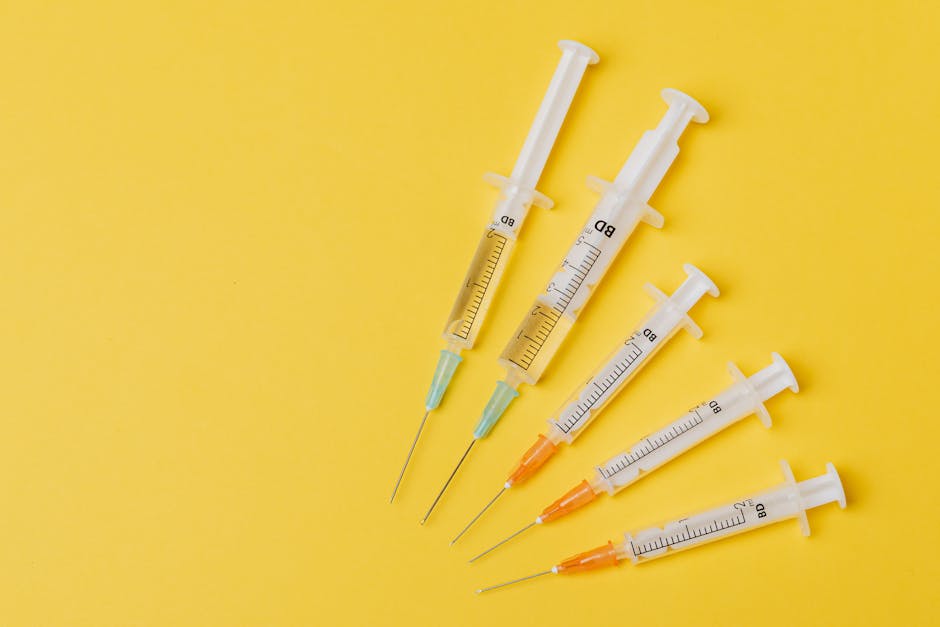7 Simple Ways to Prevent Type 2 Diabetes: Your Guide to a Healthier Future
Type 2 diabetes is a chronic condition that affects millions worldwide, often leading to serious health complications if left unmanaged. The good news? For many, it’s largely preventable. While genetics can play a role, lifestyle choices are incredibly powerful in determining your risk.

If you’re looking for 7 simple ways to prevent type 2 diabetes, you’ve come to the right place. This comprehensive guide will break down actionable strategies you can start implementing today to safeguard your health and build a stronger, healthier future. We believe that preventing type 2 diabetes doesn’t have to be complicated, and with a few straightforward adjustments, you can significantly reduce your risk.
Understanding Type 2 Diabetes: A Quick Overview
Before diving into prevention, let’s briefly understand what type 2 diabetes is. It occurs when your body either doesn’t produce enough insulin or doesn’t use insulin effectively. Insulin is a hormone that helps glucose (sugar) from food get into your cells to be used for energy. When this process goes awry, glucose builds up in your bloodstream, leading to high blood sugar levels.
Over time, consistently high blood sugar can damage various organs, including your heart, kidneys, eyes, and nerves. Factors like obesity, physical inactivity, unhealthy diet, and genetics are major contributors to its development. The good news is that by addressing these lifestyle factors, you can dramatically lower your chances of developing this condition.
The 7 Simple Ways to Prevent Type 2 Diabetes
Ready to take control? Here are seven powerful yet simple strategies to help you prevent type 2 diabetes.
1. Embrace a Balanced, Whole-Food Diet
What you eat is arguably one of the most significant factors in preventing type 2 diabetes. Shifting towards a diet rich in whole, unprocessed foods can make a profound difference. Think of your plate as a canvas for health.
- Prioritize Whole Grains: Swap refined grains (white bread, white rice, sugary cereals) for whole grains like oats, brown rice, quinoa, whole-wheat bread, and barley. Whole grains are packed with fiber, which helps stabilize blood sugar levels, improves insulin sensitivity, and keeps you feeling full longer.
- Load Up on Fruits and Vegetables: These are nutrient powerhouses, full of vitamins, minerals, and antioxidants. Aim for a colorful variety, making them the stars of your meals and snacks. Their fiber content also aids in blood sugar control.
- Choose Lean Proteins: Incorporate sources like chicken, fish, beans, lentils, tofu, and nuts. Protein helps with satiety and doesn’t cause the same blood sugar spikes as carbohydrates.
- Opt for Healthy Fats: Include monounsaturated and polyunsaturated fats found in avocados, nuts, seeds, and olive oil. These fats are crucial for overall health and can improve insulin sensitivity.
- Limit Sugary Drinks and Processed Foods: Sodas, fruit juices (with added sugar), and highly processed snacks are loaded with refined sugars and unhealthy fats that can lead to rapid blood sugar spikes and weight gain, significantly increasing your risk of type 2 diabetes. Choosing water, unsweetened tea, or coffee is a much healthier alternative.
Expert Tip: Don’t aim for perfection overnight. Start with small, sustainable changes. Replace one sugary drink a day with water, or add an extra serving of vegetables to your dinner. Consistency is key!
For more insights on making healthy eating choices, consider exploring the recommendations from the World Health Organization on healthy diet.
2. Prioritize Regular Physical Activity
Moving your body is a powerful tool in your diabetes prevention arsenal. Physical activity helps your body use insulin more effectively, lowers blood sugar levels, and contributes to weight management.
- Aim for Moderate Exercise: The general recommendation is at least 150 minutes of moderate-intensity aerobic activity per week (e.g., brisk walking, swimming, cycling) or 75 minutes of vigorous activity (e.g., running, intense sports). Break it up into shorter sessions if needed – even 10-minute walks throughout the day add up!
- Incorporate Strength Training: Muscle cells use more glucose than fat cells. Building and maintaining muscle mass through strength training (using weights, resistance bands, or bodyweight exercises) can significantly improve insulin sensitivity. Aim for at least two sessions per week.
- Reduce Sedentary Time: Sitting for prolonged periods is linked to an increased risk of type 2 diabetes. If you have a desk job, make an effort to stand up, stretch, and move around every 30-60 minutes.
Experience Shared: Many people find that finding an activity they genuinely enjoy makes it easier to stick with. Whether it’s dancing, hiking, gardening, or playing with pets, make movement a joyful part of your daily life.
3. Maintain a Healthy Weight
One of the strongest risk factors for type 2 diabetes is being overweight or obese. Carrying excess weight, particularly around the abdomen, can lead to insulin resistance. Even modest weight loss can make a huge difference.
- Understand Your BMI: Body Mass Index (BMI) is a common tool to assess weight relative to height, though it has limitations. A BMI between 18.5 and 24.9 is generally considered healthy.
- Focus on Sustainable Weight Loss: Rather than crash diets, aim for a gradual, sustainable weight loss of 5-7% of your body weight. For someone weighing 200 pounds, this means losing just 10-14 pounds – a goal that is very achievable and can significantly reduce your diabetes risk.
- Combine Diet and Exercise: The most effective approach to weight management involves both dietary changes and increased physical activity. They work synergistically to create a calorie deficit and improve metabolic health.
Losing even a small amount of weight can dramatically improve your body’s ability to use insulin and lower your risk. This is a powerful step in preventing type 2 diabetes.
4. Get Enough Quality Sleep
Sleep is often overlooked in the conversation about chronic disease prevention, but it’s incredibly important. Chronic sleep deprivation can mess with your hormones, increasing cortisol (a stress hormone) and affecting insulin sensitivity.
- Aim for 7-9 Hours: Most adults need 7 to 9 hours of quality sleep per night.
- Establish a Sleep Routine: Go to bed and wake up at roughly the same time each day, even on weekends. This helps regulate your body’s natural sleep-wake cycle.
- Create a Relaxing Bedtime Environment: Make your bedroom dark, quiet, and cool. Avoid screens (phones, tablets, TVs) for at least an hour before bed.
Poor sleep can make you hungrier, crave unhealthy foods, and reduce your motivation for physical activity – all factors that indirectly increase diabetes risk. Prioritizing rest is a simple yet effective way to support your metabolic health. You can find more comprehensive information on sleep health from the National Sleep Foundation.
5. Manage Stress Effectively
Chronic stress isn’t just bad for your mental well-being; it also impacts your physical health. When you’re stressed, your body releases hormones like cortisol and adrenaline, which can raise blood sugar levels. Prolonged stress can lead to insulin resistance over time.
- Practice Mindfulness and Meditation: Even a few minutes a day can help calm your nervous system and reduce stress hormones. There are many apps and online resources to guide you.
- Engage in Hobbies: Dedicate time to activities you enjoy – reading, painting, listening to music, gardening – anything that helps you unwind.
- Connect with Loved Ones: Social support is a powerful buffer against stress. Spend time with family and friends.
- Consider Deep Breathing Exercises: Simple breathing techniques can quickly activate your body’s relaxation response.
Learning effective stress reduction techniques is not just about feeling better; it’s a vital component of holistic health and diabetes prevention.
6. Drink Plenty of Water
Staying well-hydrated is crucial for overall health and plays a subtle but important role in diabetes prevention. Water helps your kidneys flush out excess sugar through urine, and it helps your body function optimally.
- Make Water Your Primary Beverage: Replace sugary sodas, fruit juices
